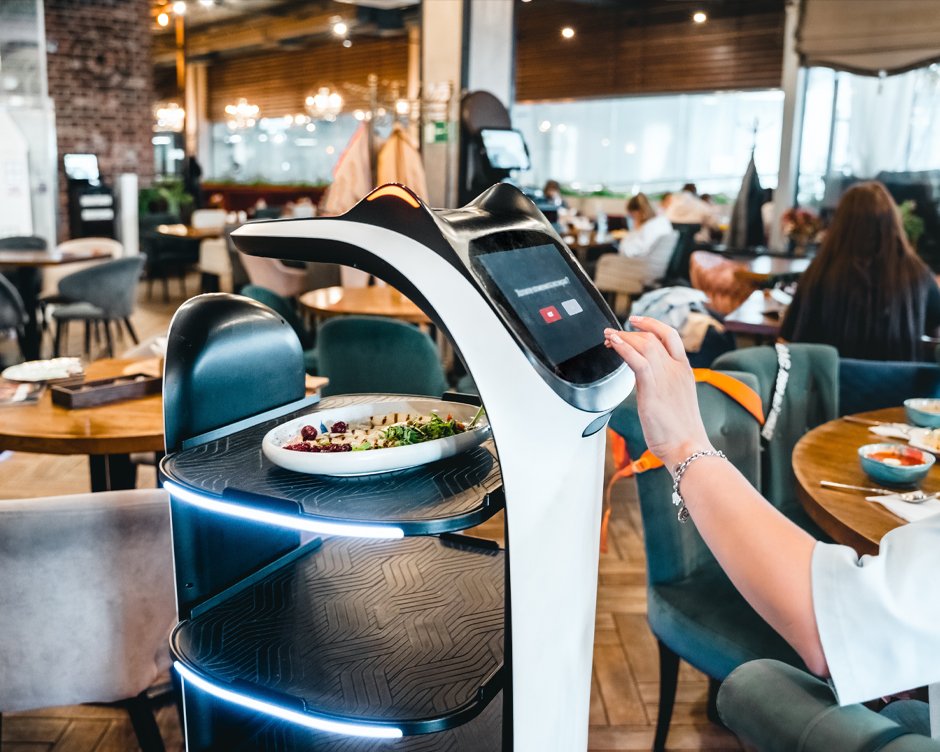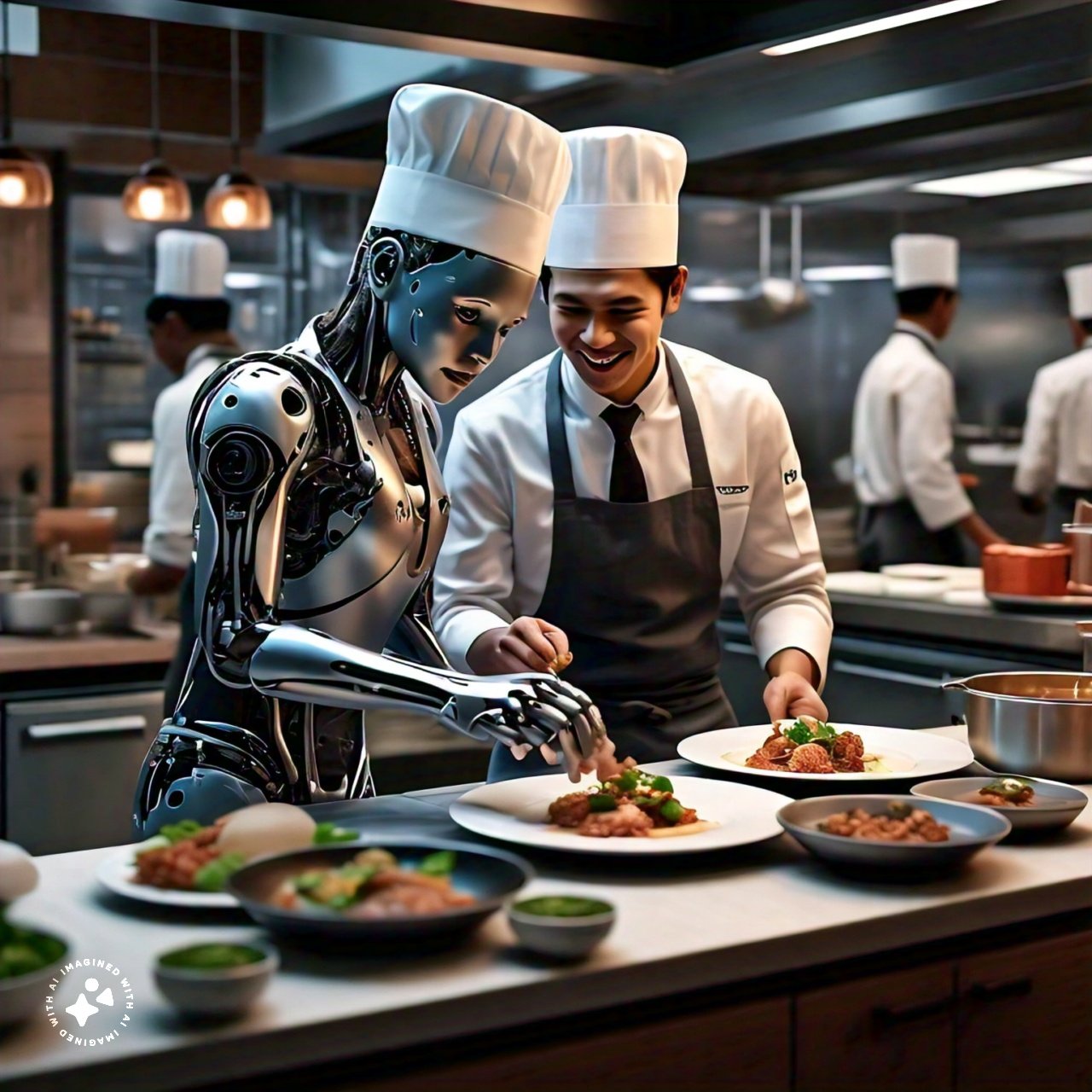In cities across the United States, dining out is no longer just about food—it’s about innovation. With artificial intelligence now being woven into the very fabric of the restaurant industry, a new wave of AI-run restaurants is reshaping the American dining experience. From robot chefs that never burn a steak to smart kiosks that remember your order, these tech-driven eateries are delivering speed, precision, and an unexpected touch of personalization.
As the country continues to embrace automation, these futuristic restaurants are rapidly evolving from niche novelty to everyday norm. What was once a sci-fi concept is now a fully operational reality—served fresh and on demand.
The Rise of AI-Run Restaurants in the U.S.
What Exactly Is an AI-Run Restaurant?
An AI-run restaurant blends artificial intelligence, robotics, and data analytics to automate processes that were traditionally managed by humans. These restaurants go far beyond self-service ordering screens—they rely on machine learning to predict inventory, optimize kitchen workflow, tailor menu recommendations, and even engage with customers in real time using conversational bots.
Some locations are fully autonomous, operating with minimal human staff, while others integrate AI as a co-pilot—freeing up employees to focus more on hospitality and less on logistics. At the heart of it all is a simple promise: smarter, faster, better dining.

Why AI Dining Is Booming in 2025
There are several driving forces behind the rise of AI in restaurants. Post-pandemic labor shortages pushed many establishments to explore automation just to keep their doors open. Rising operational costs made AI an attractive investment for long-term savings. And consumers, increasingly tech-savvy and convenience-focused, are embracing the novelty and efficiency that these AI-run models offer.
For younger generations, especially Gen Z and millennials, the idea of placing an order with a chatbot or being served by a robot isn’t strange—it’s preferred. AI enhances their experience with speed, accuracy, and personalization that traditional restaurants often can’t match.

AI-Powered Chains Leading the Charge
Several brands are pioneering this transformation in the U.S. food landscape.
Sweetgreen, the popular health-focused salad chain, has introduced robotic “Infinite Kitchens” in several locations. These automated lines prepare fresh salads with machine precision, while AI systems manage supply and kitchen flow. The result? Faster service, consistent portions, and less food waste.
Explore Sweetgreen’s Infinite Kitchen
Chipotle has tested an AI-driven robot named “Autocado” that preps avocados for guacamole, saving prep time and reducing waste. Their digital ordering platform also uses machine learning to predict popular combinations and recommend meals.
Spyce, a Boston-based restaurant backed by robotics experts from MIT, offers a fully automated kitchen experience with gourmet bowls cooked by robotic woks—no human hands needed.
And then there’s Domino’s, which has integrated AI into everything from pizza prep to smart delivery tracking, including voice-based ordering via their virtual assistant, “Dom.”
Visit Domino’s AI ordering experience

What AI Brings to the Table
Beyond speed and novelty, AI-run restaurants bring several game-changing advantages.
1. Customization at Scale
AI systems can learn your preferences over time, remembering allergies, favorite ingredients, or even your typical order on a Friday night. For repeat customers, this can feel like concierge-level service—without the overhead.
2. Streamlined Operations
AI can predict customer flow, manage inventory, and reduce food waste by understanding trends and usage patterns. This leads to fewer out-of-stock items and fresher ingredients.
3. Reduced Human Error
Mistaken orders, overcooked items, and inconsistent portions are dramatically reduced with AI precision, ensuring a more reliable and consistent customer experience.
4. Enhanced Safety and Cleanliness
Automation reduces physical handling of food, making kitchens more hygienic. In a post-COVID world, that’s not just a bonus—it’s a priority.
A Growing Role in the Back of House
While front-of-house features like kiosks and bots get the spotlight, much of AI’s impact is happening behind the scenes. AI-powered kitchen management systems optimize everything from cooking sequences to staff scheduling. Even restaurant layout planning is now data-driven, designed to maximize efficiency and minimize wait times.
And as delivery remains a dominant trend, AI helps manage third-party platforms, predict high-demand hours, and ensure that delivery menus are tailored to local tastes and behavior.
Challenges in the AI Kitchen
Despite the excitement, AI-run restaurants face their share of hurdles. Some diners worry about the loss of human touch, especially in settings where hospitality is as important as the meal itself. Others raise ethical concerns about job displacement in an already strained industry.
Then there’s the tech gap. Smaller, independent restaurants often lack the capital to invest in these advanced systems, potentially widening the gap between large chains and local eateries.
But many industry experts believe that AI is not here to replace people—it’s here to support them. In hybrid models, human workers can take on more meaningful roles like customer engagement, while AI handles the repetitive grunt work.
What the Future Holds
As more restaurants embrace AI, the customer journey will continue to evolve. Imagine walking into your favorite restaurant, and a smart table already knows your preferences. Your order is prepared by a robot chef with zero delay. The bill is automatically paid via facial recognition or app sync. No lines, no misunderstandings—just a seamless experience from start to finish.
These innovations are already being tested in tech-forward cities like San Francisco, Austin, and New York. But the trend is spreading fast, reaching smaller towns where tech-savvy operators see a way to stand out and survive.

Dining With a Digital Soul
In the end, AI-run restaurants are not about replacing hospitality—they’re about reimagining it. By letting machines handle the mechanical, restaurants have more freedom to focus on the emotional—the warmth, the ambiance, the storytelling. It’s a fusion of precision and personality that just might define the next era of dining in America.
And whether you’re grabbing a quick bite from a robot chef or customizing your dinner through an AI-powered app, one thing’s for sure: the future of food is already on the table.
Helpful Backlinks:
Sweetgreen Infinite Kitchen
Chipotle Digital Innovation
Spyce Restaurant Concept
Domino’s AI Ordering
Also read : Why Quiet Luxury Is America’s Hottest Fashion Statement Now






